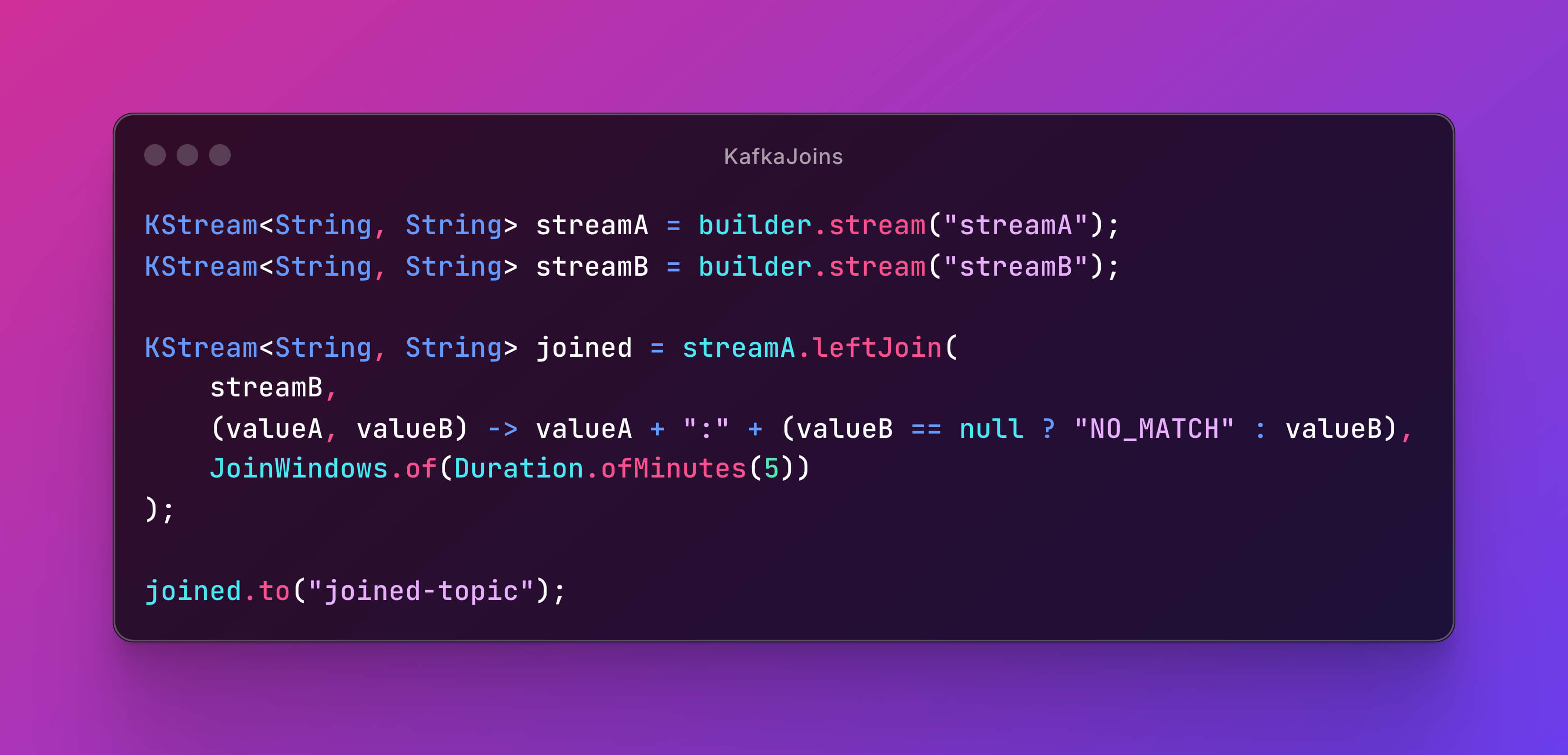We have two streams: streamA and streamB. We need to join them by key, but not all events exist in both streams.
Join Types Comparison:
| Join Type |
Behavior |
| Inner |
Only pairs where the key exists in both |
| Left |
All from streamA, plus streamB if present |
| Outer |
All pairs from both streams, even if one side is missing |
KStream<String, String> streamA = builder.stream("streamA");
KStream<String, String> streamB = builder.stream("streamB");
KStream<String, String> joined = streamA.leftJoin(
streamB,
(valueA, valueB) -> valueA + ":" + (valueB == null ? "NO_MATCH" : valueB),
JoinWindows.of(Duration.ofMinutes(5))
);
joined.to("joined-topic");
What happens:
If streamA has a key but streamB doesn’t, it returns valueA:NO_MATCH.
If both have the key, it returns the combined value.
Outer Join additionally includes records from streamB with no match in streamA.
Real-World Example — Correlating Orders and Payments in an E-commerce System:
orders (key: order_id, value: order details)payments (key: order_id, value: payment details)
Inner Join
- Shows only paid orders.
- Perfect for analytics.
Left Join
- Shows all orders, even without payment.
- Great for CRM and real-time dashboards.
Outer Join
- Gives a full picture: both unmatched orders and payments.
- Useful for troubleshooting, investigations, and monitoring failures.


